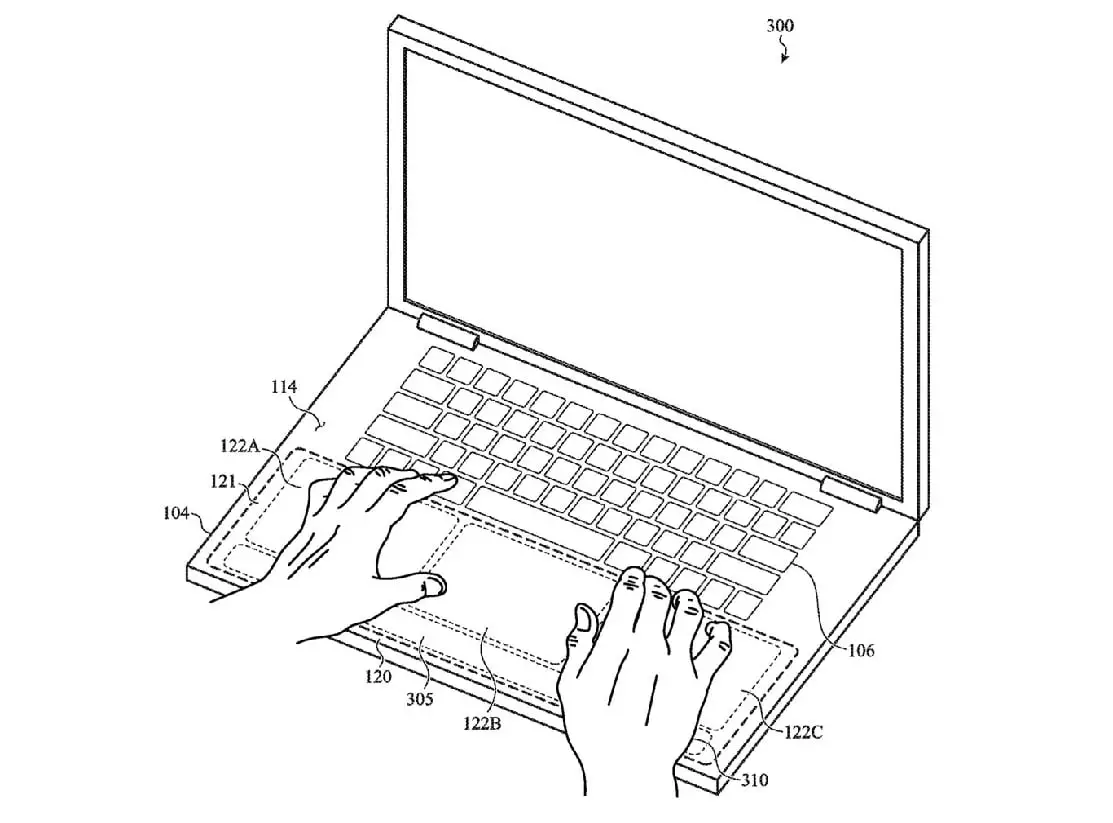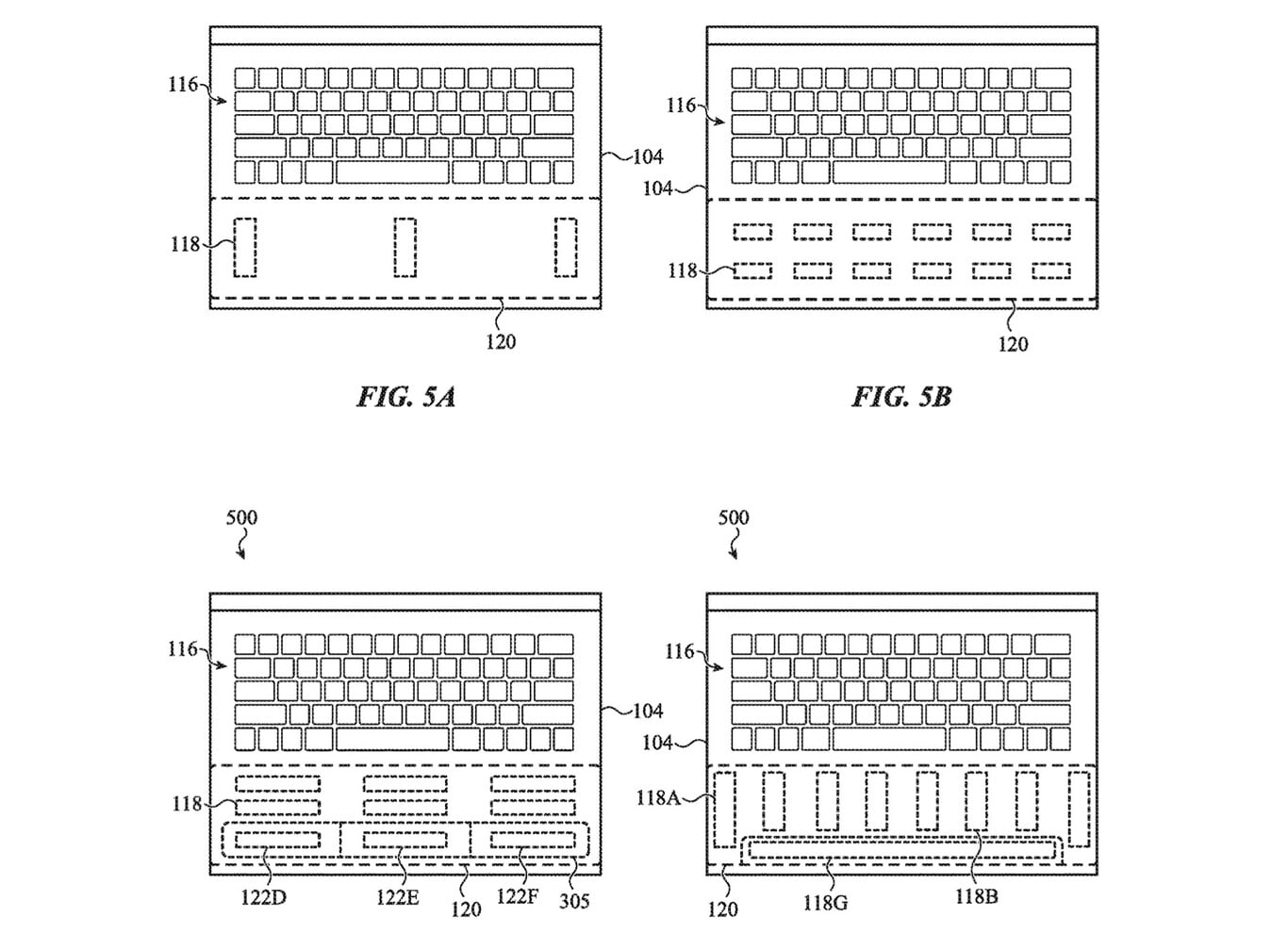U.S. Patent and Trademark Office ratified a new patent of Apple showing a possible future MacBook design with multiple haptic areas. Haptic feedback is so important on devices such as Apple Watch or iPhone. On the iPad, for example, there is no kind of response to our interactions in this way, and on the Mac, these are reduced to trackpad clicks. This could change in future devices, or at least this is what we can deduce from a recent patent.
A new Apple patent features a new MacBook design with haptic areas
The patent focuses on investigating how a more precise haptic response could be introduced in certain areas of Macs. A system that could facilitate interactions with the computer.

For now, the only haptic feedback provided by Macs is found in the trackpad. The trackpad years ago ceased to be a mechanical component to become a pressure-sensitive surface that responds with a small vibration to our clicks.
In the patent, Apple investigates the possibility of including haptic feedback in the regions where we rest our hands when writing. These regions could be activated on the right or left to give us information on various effects of the system. Apple calls it “spatially localized haptics”, thanks to them the vibration motors would be able to concentrate the response at a specific point and not feel the force of the area where it should be perceived.

In addition to this implementation, Apple is also investigating the possibility of making the areas adjacent to the trackpad pressure-sensitive. A change that could turn these surfaces into a system capable of receiving inputs and acting accordingly. Can you imagine a giant trackpad that spans from the far right to the far left of the Mac? Certainly yes. The patent mentions that this surface could be large enough to contain several touch zones on where we can act simultaneously and independently.
However, it is important to emphasize that not all patents materialize into a finished product.




